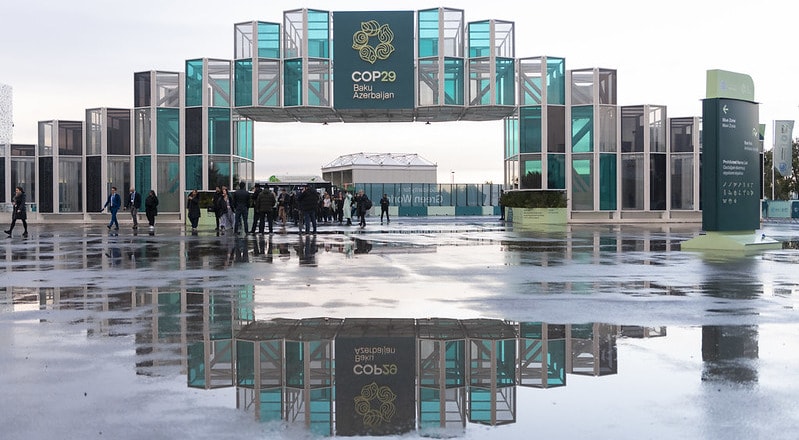The COVID-19 pandemic did not break the world, but rather revealed a world already broken. COVID-19 and the climate crisis exposed the fragility of economies and societies, upending the lives of people worldwide and, in particular, harming vulnerable communities and countries already facing multiple challenges.
This year will bring many of the same challenges as last year and will uncover new ones. Governments will need to distribute vaccines quickly and fairly, create jobs and reinvigorate economic growth while advancing a more inclusive, sustainable and resilient future. All countries will need to mobilize finance and rich countries will need to increase support to vulnerable countries to help the world adapt to the impacts of climate change.
The Climate Adaptation Summit (CAS), offered 2021’s first major steppingstone for tackling COVID-19 and climate together. Hosted by the Netherlands, the summit convened global, national and local stakeholders to deliver an adaptation action agenda that will make the world more resilient to the effects of climate change and other crises, leading to significant outcomes.
National governments and international organizations must use this year to shift their policies and investments to support the most vulnerable people. If done well, these shifts can not only help address climate impacts, but also help tackle health and economic risks facing these communities.
Here are three key shifts they must take to advance adaptation and resilience in 2021:
1. Advance Climate Finance for Vulnerable Countries and Communities
Climate change could push more than 130 million people in developing countries below the extreme poverty line by 2030. COVID-19 is exacerbating this trend, as the pandemic may push an additional 100 million to 150 million people below the extreme poverty line by the end of this year.
To cope with these crises, donor countries, multilateral development banks and climate funds must increase the volume and ensure greater predictability of adaptation finance. Increasing climate finance can combat poverty by bringing environmental, societal and economic benefits to countries and communities on the frontlines of climate impacts. For example, investing $250 to $500 per hectare in better dryland farming practices could increase cereal yields by 70% to 140%, bringing billions of dollars in net economic benefits.
The United Nations Secretary-General Antonio Guterres recently called for all donors and development banks to increase the share of adaptation and resilience finance to at least 50% of their climate finance by COP26 in November 2021. This must be a top priority.
Donor countries must also ensure that funding for Official Development Assistance (ODA) isn’t slashed amid the economic fallout from COVID-19. Such a trend would significantly undercut countries’ ability to reduce underlying causes of vulnerability, not just to climate change, but also to economic and health risks.
Some of this finance should flow toward nature-based solutions, which is currently receiving very little funding. The natural environment can be one of the most effective solutions in protecting communities from climate impacts like storms and floods, sequestering carbon and improving human health. Nature-based solutions can also be key to COVID-19 recoveries, providing jobs and generating economic growth in ways that protect and restore the natural systems on which economies depend.
WRI and Climate Finance Advisors are leading the first-ever assessment of the current landscape of international public financing of nature-based solutions for adaptation. The assessment, to be released in February, will quantify current financing flows and identify innovative approaches to increase the scale and effectiveness of funding.
2. Integrate Climate Risks into Policy, Investment and Budget Decisions
For countries to prepare for climate impacts, they need to ensure risks they face are fully understood and reflected in the decisions that public and private actors make. Countries must begin building these risks into policy and translating policy into on-the-ground investments, otherwise they risk exposing themselves to preventable costs and suffering.
Some countries are integrating climate risks into policies and plans, but a major implementation gap still exists. A 2018 review of more than 100 mainstreaming efforts finds that many governments have integrated adaptation into sectoral policies and plans, but only half of them reported concrete projects and activities.
COVID-19 recovery plans offer an opportunity to begin building resilience. A more resilient recovery could have multiple benefits, such as avoiding loss from climate impacts, addressing underlying drivers of inequality and poverty and reducing the spread of infectious disease.
Related Articles: How to Impact Climate Change Adaptation and Mitigation Around the World | What Gender-Responsive Adaptation Teaches Us About an Equitable Recovery
Some leaders are taking steps forward, but it’s still too slow and insufficient to meet the scale of the challenge. WRI is developing a first-of-its-kind analysis on the extent to which countries are incorporating climate resilience into their stimulus packages. Preliminary findings reveal that some countries are using stimulus spending to build resilience to climate change. Fewer than a third of the 66 countries included in the analysis are taking at least one concrete measure to strengthen climate resilience in a particular sector or area, and only one-fifth of the 66 countries analyzed aspire to make climate resilience a broader stimulus objective. Countries that already consider and integrate climate risk and resilience into their planning and financing decisions are more likely to have integrated these concerns into their stimulus responses.
These preliminary findings underscore the importance of central ministries understanding climate risks and adaptation benefits, as well as increasing their capacity to integrate climate resilience into long-term planning, investment design, budget processes and procurement. With this goal in mind, WRI aims to launch a new program at COP26 in November to help central ministries, especially from African and G20 countries, integrate climate risk.
3. Invest in Locally Led Adaptation
Local actors have the knowledge and experience to inform solutions that will allow them to respond to climate change impacts, yet local people face challenges in accessing funding and are often left out of decisions that affect them. National governments and donor agencies must take action to fix this by ensuring that funding reaches local communities. They must also strengthen the role of local communities and governments in program design and funding decisions so that they have the power to identify, prioritize, implement and monitor climate adaptation solutions.
WRI and International Institute for Environment and Development (IIED) — together with BRAC, Slum Dwellers International, International Centre for Climate Change and Development (ICCCAD) and the Huairou Commission — developed a set of principles for locally led adaptation, engaging dozens of partners in a year-long process. At CAS, over 40 organizations committed to:
- Devolving decision-making to the lowest appropriate level.
- Addressing structural inequalities faced by women, youth, disabled people, displaced people, Indigenous peoples and excluded ethnic groups.
- Providing funding through simpler access modalities, as well as longer-term and more predictable funding horizons.
- Investing in local capabilities to leave an institutional legacy.
- Building a robust understanding of climate risk and uncertainty.
- Supporting flexible programming and learning.
- Ensuring transparency and accountability downward to local actors.
- Facilitating collaborative action and investment.
These principles must be applied to multiple sectors and focus areas, guiding adaptation efforts to ensure that local communities have the support and resources they need.
In agriculture, WRI is helping put these locally led adaptation principles into practice. WRI is working with CGIAR, the world’s largest agricultural research institution, to ensure their proposed new Two Degree Initiative is not only climate-centered, but also demand-driven and responds to the priorities of farmers, fishers and herders. WRI and CGIAR organized over 50 listening sessions with a diverse set of stakeholders, leading to key findings such as strengthening the co-creation of agricultural research and development so that a broader range of stakeholders receive solutions that will benefit them, and promoting more inclusive, climate-informed and risk-tolerant innovation systems. In addition, WRI — in partnership with the World Food Programme, World Business Council for Sustainable Development, Columbia University and the Global Center on Adaptation — is also developing an “investment blueprint,” to be published in April, to facilitate digital climate advisory services for 300 million small-scale producers. The blueprint calls for investments in such services to promote equity, co-creation, transparency and accountability.
WRI is also helping cities, who are on the frontlines of both COVID-19 and climate impacts, build resilience. To help cities build a more climate-resilient and inclusive future, WRI and key partners — including Resilient Cities Network, UN-Habitat and the Global Center on Adaptation — are launching the 1,000 Cities Adapt Now program at CAS, which aims to accelerate adaptation in 1,000 cities by 2030. The program will focus on implementing a comprehensive package of adaptation measures — including investments in nature-based solutions, urban water resilience, capacity building and more — with a focus on vulnerable communities.
Making Adaptation a Top Priority in 2021
The Climate Adaptation Summit is the first of several key moments during 2021. Other moments that can serve to accelerate action and support for adaptation include a climate and development event hosted by the United Kingdom in March, a leaders’ climate summit hosted by the Biden administration of the United States in April, the G7 Summit in June, the V20 Summit in October and the climate COP26 in November. The next climate COP, COP27, will take place in Africa and adaptation will remain a top theme.
This is a “make-or-break” year for advancing adaptation action. As countries deal with the compounding health, economic and climate change crises, the Climate Adaptation Summit serves as an important milestone in 2021. As the world continues to try to recover from the pandemic, it must recognize the vulnerabilities in the existing system. Successfully implementing these three shifts will play a central role in creating a safer, healthier and more resilient future for all.
Editor’s Note: The opinions expressed here by Impakter.com columnists are their own, not those of Impakter.com. — In the Featured Photo: Windmills in Zaanstad, Netherlands. The Netherlands is hosting this year’s Climate Adaptation Summit Featured Photo Credit: Michal Soukup
















